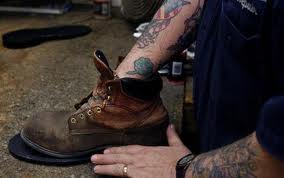Tough yet smooth to the touch, leather is the ideal material used for items such as jackets, bags, furniture coverings, and others. However, it is its very toughness that makes it hard to repair leather. For the really severe damages, one should refer to the expertise of professional upholsterers, tailors or luggage repairmen. But for relatively minor damages, one can learn how to repair leather by themselves.
Small rips or holes on leather which measure just below 1 ½” or 4 cm can be repaired by making a patch. With a sharp pair of scissors, cut around the tear in order to make a circle that is big enough to get rid of the rough edges. Do not make the hole bigger than it has to be. Put a piece of paper under the round hole, tracing its shape on the paper with a pencil. The traced circle is then cut out from the paper and used as a template for cutting a circle out of a swatch of leather matching the leather material being repaired. If only a small patch of leather is needed to repair leather clothing, a swatch cut from its pocket or its interior lining can sometimes suffice. Otherwise, one can either purchase substitute leather swatches from fabric or upholstery stores, or they can look for leather suppliers on the internet. 
The circle-shaped leather piece is placed in the hole, doing so on a hard, smooth and even surface. With a smooth-headed hammer, strike the leather’s backside gently to make the circle lie flat and reduce its thickness. Then, cut out a patch of linen that is bigger on all sides than the leather circle by at least an inch or 2.5 cm. The leather circle is to be adhered onto the center of the linen patch using garment glue. The linen patch is next adhered to the backside of the leather being repaired in order for the circle to fit in the hole perfectly. After patching up the leather, heavy weights (phone books, for instance) should be placed over it for 1 hour so that the patch can dry in place easily.
If the leather’s damage is a smooth and clean cut, the 2 smooth edges should be folded together and then sewn together using a slanting stitch on the leather’s backside. The stitches should be kept far apart from each other, as leather can be weakened by heavy stitching. Also, one should employ a heavy-duty needle, as well as use either silk or polyester thread instead of the much-weaker cotton thread. To repair the parts in leather clothing that are prone to wear and tear (like the armpits or the elbows), a combination of both the patch and stitching methods should be used.
Snags in leather can be repaired by applying clear nail polish to smoothen it in place. However, using clear nail polish is not recommended in fixing snagged suede. For removing cracks and small scratches on leather, use leather conditioner to make it supple and smooth, and to get rid of blemishes caused by dryness. If that doesn’t work, one may also use a shoe polish which complements the color of the leather. To make sure that this works, test it out in an unobtrusive area of the leather first.


